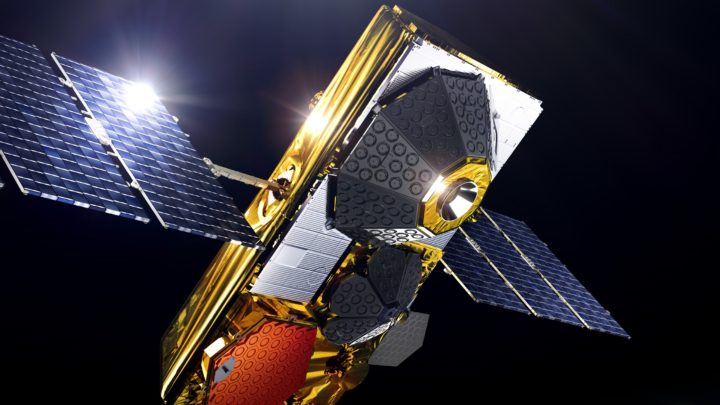
The transport and logistics industry has made huge progress in understanding and harnessing the benefits of being able to track and monitor assets and cargo.
There is now widespread recognition of the operational value that can be derived from having an accurate understanding of the location and status of high-value fixed and movable assets, including road vehicle fleets, sea-faring vessels as well as tank cars and containers.
Any asset can yield a far higher return on investment over its lifecycle when it is intelligently managed; productivity is maximised and downtime is minimised.
Of course, a huge benefit too is that customers get reliable information on supply chain timetables.
Industry has woken up to the potential business value that can be realised from analysing the granular information harvested from innovative asset tracking solutions. Thanks to the burgeoning data lakes from the Internet of Things, everyone is talking about Big Data today.
Ubiquitous and uninterrupted
To ensure data streams are true, robust and complete – in order for analytics specialists to be able to make accurate and trustworthy predictions reliably – transmissions from the IoT devices need to be ubiquitous and uninterrupted. This presents challenges when you are tracking a container making its way across the globe.
Many of us will have personally experienced the frustration of data transmission interruption: for example, when you’re watching Netflix and your Wi-Fi falters. When you’re transmitting data to monitor a worldwide fleet of cargo vessels, the consequences of dataflow interruption are can be more serious.
A variety of technologies and solutions exist in the market which promise always-on low-power tracking capability for assets and cargo. These are based on a range of distribution technologies including GSM, proprietary radio (LoRa) and local or wide area networks (LAN/WAN).
However, only by employing satellite communications can users be sure that the connectivity with their shipments and the assets which convey them will be uninterrupted, whatever the weather or environment, and even when items travel beyond regions of reliable GSM reach.
Competitive edge
Satellite-enabled IoT asset tracking takes another huge leap forward when the tech can embrace computing at the edge.
Edge computing is a fast-growing IT paradigm which refers to networks and devices at or near the user. Edge is about manipulating data closer to where it’s being generated, enabling processing at greater speeds and volumes, leading to more action-led results in real time. Computing at the edge means significant savings on moving data, because the information is processed where produced, and needed. Edge-located data processing keeps functioning even when communication channels are slow, intermittently available or down. Add the reach and always-on reliability of satellites into the mix, and you get a completely robust, highly capable and ubiquitous data flow, with no interruptions that render the data, and the ability to consistently track and monitor assets, ineffective.
Data being sited at the edge also enables far greater system scalability. Organisations can add edge devices incrementally so they’re using only what they need. Hosting Big Data on the edge enables quick system configuration, and makes the introduction of new AI-driven applications possible.
Next generation
Empowering satellite asset tracking with the capability for data processing at the edge can dramatically simplify operations and cut costs.
Instead of wasting hours manually checking the location of artics or trailers, a smart, satellite-enabled asset tracking IoT solution that embraces edge computing can make a major difference to cost and risk. With artics/trailers automatically pinging their location, manual checks become obsolete, and customers can be charged accurately.
Thieves find themselves leaving a digital trail as geofencing technology, enabled by these state-of-the-art solutions, triggers alerts relating to an artic or trailer going where it is not expected. Sensors can report utilisation to predict when maintenance is needed and monitor conditions from temperature and open doors to the presence of cargo. In addition to greater productivity, lower risk, and higher revenues, avoiding purchase or rental of additional trailers can save a fortune each year.
Asset tracking technology becomes a true capabilities powerhouse when it’s based on open architecture, and flexible enough to deploy so that it encourages the creation of new applications and enabling devices.
IoT tracking systems are being used in new and imaginative ways every day. They are solving problems in creative ways for businesses, entire industries and communities. The right technology can catalyse a ceaseless flow of opportunities for partners to create applications specifically designed to overcome operational challenges in all sectors, including logistics, as well as in maritime, energy and oil and gas, among others.
Many logistics companies still rely on phone calls and written logs to track equipment as it’s transported. But with the right satellite asset tracking solution, companies can check the location and status of equipment in near real-time. They can export data into their applications and accurately track data for billing every time a piece of equipment is used on a project. Onboard power and movement sensors can gather and report engine runtime accumulation and validate equipment operation to enable more cost-effective maintenance and greater uptime. Gains in productivity, additional revenue, maintenance costs, and uptime can be transformative.
Now add the Sun
Transport and logistics providers quite understandably crunch and re-crunch the numbers when it comes to deciding to invest in smart asset tracking technologies, but top of the list of requirements are energy economy and low maintenance. The financial case can be transformed with the introduction of solar powered technology. When batteries can last years without recharging, the financial benefit is stark.
Everyone’s talking about Big Data with good reason – that’s because there’s a wealth of data out in the field that can be used for faster, smarter decision-making to transform a business and even the whole supply chain. Move that data to the edge, solar power it, and what’s possible with asset tracking goes to the next level.